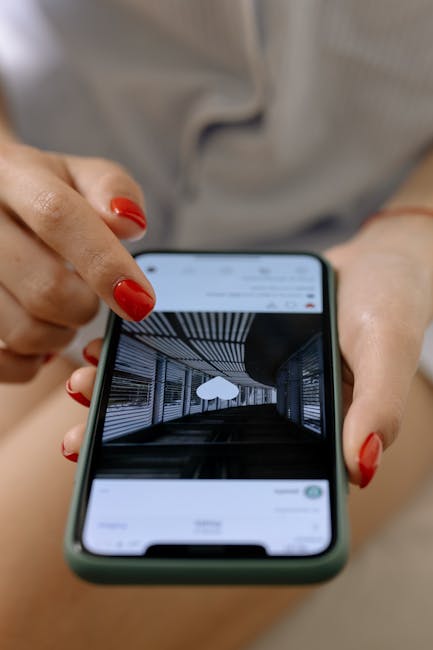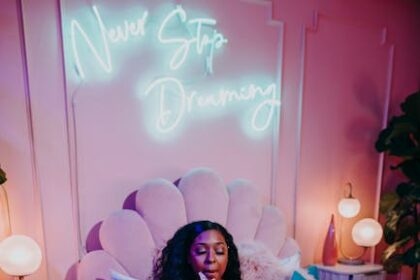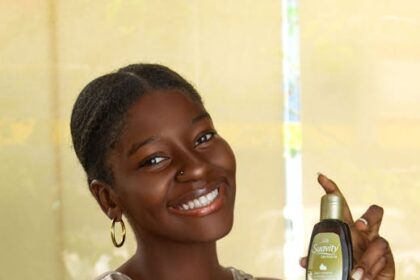Optimizing your Instagram ad creatives for maximum engagement is not merely about aesthetic appeal; it is a strategic imperative that directly influences campaign performance, return on ad spend (ROAS), and overall business growth. In an increasingly competitive digital landscape where user attention spans are fleeting, the visual and textual elements of your ad become the primary differentiator, determining whether a scroll stops or continues. Mastery of creative optimization demands a nuanced understanding of Instagram’s platform dynamics, user behavior, psychological triggers, and continuous data-driven iteration. This comprehensive exploration delves into the foundational principles, tactical approaches, advanced methodologies, and crucial considerations for transforming your Instagram ad creatives from mere promotional material into powerful engines of connection and conversion.
Understanding the Core Principles of Instagram Ad Engagement
Effective Instagram ad creatives are built upon several foundational pillars, each contributing to their ability to capture attention and compel action. Neglecting any one of these principles can significantly diminish your ad’s potential.
The Visual-First Imperative: Instagram is inherently a visual platform. Users are accustomed to consuming high-quality images and videos. Your ad creative, whether an image, video, carousel, or story, must immediately communicate its value proposition through compelling visuals. This means prioritizing stunning photography, high-definition video, thoughtful color palettes, and impactful graphic design. The visual component serves as the initial hook, dictating whether a user pauses their scroll. This initial visual impact is critical; a fuzzy image, poorly lit video, or cluttered design will lead to immediate disengagement. Consider the visual narrative before crafting a single word of copy. The emotional connection or practical utility must be evident within the first glance.
Mobile-First Design Philosophy: The vast majority of Instagram users access the platform via mobile devices. This necessitates a “mobile-first” approach to creative development. Designs must be legible, clear, and impactful on small screens. Text overlays should be concise and large enough to read without squinting. Videos should be optimized for vertical viewing (9:16 aspect ratio for Stories and Reels, or square/vertical for feed) and designed to be effective even without sound. Cluttered layouts, tiny fonts, or horizontal videos not adapted for mobile will perform poorly. Test your creatives on various mobile devices to ensure optimal display and user experience. The touch-and-swipe gestures common on mobile also influence how carousels and story ads are consumed.
Audience-Centricity: Superior ad creatives resonate deeply with the target audience. This requires a profound understanding of their demographics, psychographics, pain points, aspirations, and consumption habits on Instagram. A creative optimized for Gen Z might leverage trending audio and fast cuts, while one for a B2B professional might use a more direct, problem-solution approach with clean visuals. Develop audience personas and tailor visuals, messaging, tone, and even the choice of ad format (e.g., Reels for a younger audience, detailed carousels for considered purchases) to speak directly to their specific needs and desires. Generic ads, while potentially reaching a broad audience, rarely achieve high engagement. Personalization, even subtle, significantly boosts relevance.
The Role of Storytelling: Humans are hardwired for stories. Effective Instagram ad creatives don’t just present a product; they tell a story. This could be the story of a problem solved, a dream realized, a transformation achieved, or an experience shared. Storytelling in ads creates an emotional connection, makes the brand more relatable, and helps users envision themselves using the product or service. This can be achieved through a series of images in a carousel, a narrative arc in a video, or even a compelling caption that sets a scene. For instance, instead of just showing a coffee cup, show someone enjoying a peaceful morning ritual with that coffee, evoking a feeling.
Actionable Calls to Action (CTAs): The ultimate goal of an ad creative is to drive a specific action. A clear, compelling, and strategically placed Call to Action (CTA) is essential. It must tell the user exactly what to do next (e.g., “Shop Now,” “Learn More,” “Sign Up,” “Download”). The CTA button should be visually prominent and the language concise. The creative itself should lead naturally to the CTA, building desire or urgency before the prompt. Ambiguous or missing CTAs lead to lost opportunities, as even highly engaged users may not know what step to take next.
A/B Testing as a Continuous Process: Creative optimization is not a one-time task; it’s an ongoing, iterative process. What works today might not work tomorrow due to audience fatigue, market shifts, or new trends. Consistent A/B testing of different creative elements (visuals, headlines, copy, CTAs, formats) is crucial for identifying what resonates best with your audience and continually improving performance. This scientific approach removes guesswork and ensures your budget is allocated to the most effective creatives. Embrace a culture of experimentation and data analysis, treating every ad as an opportunity to learn and refine.
The Anatomy of a High-Performing Instagram Ad Creative
Dissecting a successful Instagram ad reveals a meticulous interplay of visual elements, ad copy, and a strategic Call to Action, each optimized for maximum impact within the platform’s unique environment.
Visual Elements: Images and Videos
The visual is your first and often only chance to stop a scroll. Its quality and relevance are paramount.
- High-Resolution and Professional Quality: Blurry, pixelated, or amateur-looking visuals immediately undermine credibility and appear unprofessional. Invest in high-quality photography and videography. Ensure proper lighting, crisp focus, and aesthetically pleasing compositions. Even if using a smartphone, leverage good lighting and stable shots. Professional quality signals trustworthiness and attention to detail.
- Thumb-Stopping Hooks: The First 3 Seconds (for video) / Immediate Impact (for image): In the rapid-fire scroll of Instagram, you have mere seconds to capture attention. For videos, the first 3 seconds are critical. They must feature a visually striking element, an intriguing question, a dramatic reveal, or a compelling action. For images, the entire frame must deliver an immediate punch. This could be through vibrant colors, an unusual subject, a strong emotional expression, or a clear product benefit. Avoid slow intros or generic stock footage at the beginning. Get straight to the most engaging part.
- Color Psychology and Branding: Colors evoke emotions and associations. Understand basic color psychology and align your creative’s palette with your brand identity and the desired emotional response. Warm colors (red, orange, yellow) can convey energy and excitement, while cool colors (blue, green, purple) suggest calm, trust, or sophistication. Consistency in color usage across your creatives reinforces brand recognition. Ensure colors are vibrant but not overwhelming.
- Composition and Framing: The way elements are arranged within your visual frame significantly impacts its effectiveness. Use the rule of thirds to place key subjects, create leading lines to guide the eye, and consider negative space to avoid clutter. For products, ensure they are well-lit and clearly visible. For lifestyle shots, ensure the focus is on the human element and their interaction with the product. Eye-level shots often feel more personal.
- Authenticity vs. Polished Perfection: While high quality is crucial, an overly polished, generic “stock photo” feel can sometimes backfire. Instagram users value authenticity. Incorporate elements that feel real and relatable, even if professionally produced. This could mean showing real people, natural settings, or slightly imperfect but genuine moments. User-Generated Content (UGC) excels here, as it inherently possesses this authenticity. Balance professional polish with a touch of genuine human connection.
- Text Overlays and Graphic Elements: Strategic use of text overlays can highlight key benefits, promotions, or calls to action directly within the visual, which is especially important for sound-off consumption. Keep text concise, use legible fonts, and ensure high contrast against the background. Avoid overcrowding the visual with too much text, adhering to the 20% text rule (though less strictly enforced now, it remains a good guideline for visual clarity). Graphic elements like arrows, circles, or bursts can draw attention to specific parts of the image or video.
- Video Specifics: Pacing, Sound Design (for optional use), Subtitles:
- Pacing: Instagram videos, especially for ads, should be fast-paced. Maintain momentum with quick cuts and avoid lingering on static shots. Get to the point efficiently.
- Sound Design: While many users watch without sound, compelling sound design (music, voice-overs, sound effects) can significantly enhance the experience for those who do. Use royalty-free music that matches the mood of your ad.
- Subtitles: Absolutely essential for video ads, as over 85% of social media videos are watched with sound off. Ensure subtitles are accurate, legible, and synchronized. They allow your message to be understood regardless of sound settings.
- Image Specifics: Single Focus, Product Showcases, Lifestyle Shots:
- Single Focus: For single image ads, ensure there’s one clear focal point. Don’t try to cram too many ideas into one frame.
- Product Showcases: Highlight product features from multiple angles, or demonstrate scale. High-quality imagery of the product itself is non-negotiable for e-commerce.
- Lifestyle Shots: Show your product in use, ideally by diverse models who reflect your target audience. Focus on the feeling or outcome associated with the product, not just the product itself.
Ad Copy: Crafting Compelling Narratives
The copy complements the visual, adding context, building desire, and guiding the user towards action.
- The Hook: Grabbing Attention Immediately: The first line of your ad copy is as crucial as your visual hook. It needs to immediately pique curiosity, state a compelling benefit, or pose a relevant question. Examples: “Tired of dull commutes?” or “Unlock radiant skin overnight.” This initial statement determines if the user will tap “See More.”
- Problem-Solution Framework: A highly effective copywriting technique. Start by clearly articulating a common problem or pain point your audience experiences, then present your product or service as the ultimate solution. This resonates because it directly addresses their needs.
- Benefit-Driven Language: Users care about what your product does for them, not just what it is. Translate features into benefits. Instead of “12-megapixel camera,” write “Capture breathtaking photos with incredible detail.” Focus on the outcome and value for the user.
- Conciseness and Clarity: While Instagram allows for longer captions, brevity is often key. Get your message across efficiently. Avoid jargon, overly complex sentences, or unnecessary words. Every word should earn its place. Use short paragraphs and line breaks to improve readability.
- Emojis and Formatting: Emojis can add personality, break up text, and draw attention to key points. Use them strategically and sparingly, ensuring they align with your brand voice. Utilize line breaks, bullet points, and bolding (if possible, through Unicode characters or external tools) to make the copy scannable and digestible.
- Tone and Brand Voice: Maintain a consistent brand voice across all your creatives. Is your brand playful, authoritative, empathetic, or inspiring? Ensure your copy reflects this. A consistent tone builds brand recognition and trust.
- Urgency and Scarcity: Where appropriate, create a sense of urgency or scarcity to encourage immediate action. Phrases like “Limited stock,” “Offer ends soon,” or “Don’t miss out” can be powerful motivators, but use them genuinely to avoid appearing deceptive.
- Social Proof Integration: Incorporating social proof, such as testimonials, star ratings, or user counts (“Trusted by 10,000 customers”), builds trust and credibility. People are more likely to buy something if they see others have had positive experiences.
- Hashtag Strategy (briefly): While less critical for direct ad performance than for organic reach, relevant and targeted hashtags can sometimes provide additional context or discovery. Focus on branded hashtags or highly niche ones, but don’t overdo it. The ad platform handles targeting, not hashtags.
Call to Action (CTA): Guiding User Behavior
The CTA is the pivot point of your ad, converting engagement into action.
- Clarity and Specificity: Your CTA must be unambiguous. “Click Here” is vague. “Shop Now,” “Learn More,” “Sign Up,” “Download App,” “Get Quote” are clear and tell the user precisely what will happen next.
- Placement and Prominence: The CTA button is usually provided by Instagram, but ensure your copy subtly leads to it. If you include a link in your caption (for non-CTA button ads), make it stand out and explain its purpose. Ensure the official CTA button is visually prominent.
- Strong Action Verbs: Use verbs that command attention and imply immediate action. “Discover,” “Unlock,” “Transform,” “Claim,” “Experience.”
- Alignment with Landing Page: Crucially, the CTA must accurately represent what the user will encounter on the landing page. If the CTA says “Shop Now,” they should land directly on a product page or collection, not a blog post. Misalignment leads to frustration and high bounce rates.
Creative Formats and Their Optimization
Instagram offers diverse ad formats, each with unique strengths and optimal use cases. Understanding and leveraging these differences is key to maximizing engagement.
Single Image Ads: Simplicity and Focus
Single image ads are often the entry point for many advertisers due to their relative simplicity. They are effective for conveying a clear, concise message with a powerful visual.
- Best Practices for Product Shots, Lifestyle, Infographics:
- Product Shots: Crisp, well-lit images of your product, potentially showcasing unique features or details. Use a clean background that highlights the product. Consider scale if relevant.
- Lifestyle Shots: Show your product in action, integrated into a real-world scenario. Focus on the emotion or benefit the product brings. Authenticity is key.
- Infographics/Text-Based Images: For complex concepts or data, a visually appealing infographic can simplify information. Ensure text is minimal, large, and high-contrast for mobile readability. Highlight one key statistic or benefit.
- Visual Storytelling through a single frame: Even a single image can tell a story. A before-and-after shot, a dramatic close-up, or an image conveying a specific mood or aspiration can communicate a narrative instantly. The context provided by the copy becomes crucial here.
Single Video Ads: Dynamic Engagement
Video ads are highly engaging and allow for more comprehensive storytelling, product demonstrations, or brand building.
- Short-form vs. Long-form considerations: For feed ads, shorter videos (15-30 seconds) often perform best for initial engagement. Longer videos (up to 60 seconds) can work for more complex products or compelling stories but risk drop-off. For Stories/Reels, keep them extremely short (5-15 seconds).
- Looping and seamless transitions: If your video is short and designed to loop (e.g., a GIF-like animation), ensure the beginning and end flow seamlessly to create a continuous, mesmerizing effect.
- Sound-off optimization (subtitles, visual cues): As previously mentioned, this is non-negotiable. Your video must make sense and convey its message without sound. Use text overlays, clear visual demonstrations, and subtitles.
- Demonstrations and tutorials: Videos are ideal for showing how a product works, demonstrating its benefits, or providing a quick tutorial. This builds trust and reduces purchase friction. Highlight key features in motion.
Carousel Ads: Multi-Storytelling and Product Showcases
Carousel ads allow users to swipe through multiple images or videos within a single ad unit, offering a versatile canvas for extended narratives.
- Sequential Storytelling: Use each card in the carousel to advance a story. This could be a problem-solution narrative, a step-by-step guide, or a user journey. Each card builds on the last, guiding the user to the final CTA.
- Product Collections: Showcase multiple products from a collection, different variations of a single product, or complementary items. This is excellent for e-commerce, allowing users to browse without leaving the app.
- Features and Benefits breakdown: Dedicate each card to a specific feature of your product and its corresponding benefit. This is great for products with multiple selling points.
- User Journey mapping within the carousel: Guide the user through a mini-funnel. Card 1: Hook/Problem. Card 2: Solution/Product Intro. Card 3: Benefits/Social Proof. Card 4: CTA.
- Video + Image combinations: Carousels can mix images and videos, allowing for dynamic presentations. Start with a video hook, then follow with static images for detail, or vice-versa.
Story Ads: Immersive and Full-Screen
Instagram Stories are full-screen, vertical, ephemeral content, offering an immersive and authentic ad experience.
- Vertical Optimization (9:16 aspect ratio): Crucial for Stories. Content must fill the entire screen without awkward cropping.
- Interactive Elements (polls, quizzes, swipe-up, stickers): Leverage interactive stickers (if available for ads) to boost engagement. The “Swipe Up” CTA is iconic for Stories, providing a direct link to your landing page. While no longer universal for organic stories, it’s still prominent in Story ads.
- Authenticity and “behind-the-scenes” feel: Stories often feel less curated and more spontaneous than feed posts. Lean into this authenticity. Show raw, “behind-the-scenes” content, unedited moments, or user-generated content for a more native feel.
- Quick cuts and fast pacing: Story users consume content rapidly. Keep videos short, with fast cuts and dynamic visuals. Grab attention within the first second.
- Sound-on potential: Stories are more frequently watched with sound on than feed videos. While still optimize for sound-off, consider adding engaging audio or voiceovers for an enhanced experience.
Reels Ads: Short-Form, Trend-Driven Video
Reels are Instagram’s answer to TikTok, focusing on short, entertaining, and highly shareable video content.
- Leveraging trending audio and challenges: The algorithm favors content that uses trending audio or participates in popular challenges. Adapt these trends to your brand in a relevant way for higher reach and native feel.
- High entertainment value: Reels are primarily for entertainment. Your ad needs to entertain first, sell second. Use humor, surprise, visual effects, or compelling narratives.
- Educational snippets: Break down complex information into quick, digestible educational snippets. “3 tips for X,” “How to Y in 15 seconds.”
- Product showcases in a native, engaging format: Instead of a direct product shot, integrate your product into a trending video format. Show it being used in a fun way, or feature a quick transformation using the product. Make it feel less like an ad and more like organic content.
Collection Ads: E-commerce Focused
Collection ads are specifically designed for e-commerce, combining a primary video or image with a grid of products.
- Combining video/image with product grid: The hero visual (video or image) draws attention, while the instantly visible product grid allows users to browse and click directly on items of interest. Use the hero visual to showcase the lifestyle associated with the products or a compelling product demonstration.
- Seamless shopping experience: This format is optimized for discovery and conversion within the app, leading to a smooth transition to your product pages. Ensure your product catalog is well-maintained and high-quality images are associated with each product.
Advanced Creative Optimization Strategies
Moving beyond the basics, advanced strategies involve leveraging audience insights, technology, and continuous testing to achieve peak performance.
Leveraging User-Generated Content (UGC): Authenticity and Trust
UGC is content created by customers about your brand or products. It’s incredibly powerful in advertising because it acts as authentic social proof.
- Sourcing and Permissions: Actively encourage customers to create content (e.g., through contests, branded hashtags). Always obtain explicit permission from the creator before using their content in paid ads, especially if they are identifiable.
- Curating High-Quality UGC: Not all UGC is ad-worthy. Select content that is high-resolution, visually appealing, and clearly showcases your product or the positive experience it delivers. Look for content that aligns with your brand aesthetic.
- Integrating UGC into Ad Campaigns: Use UGC in image ads, video ads (compiling multiple clips), or carousel ads. It works particularly well in Story ads due to their authentic nature. Test UGC against professionally shot content to see which resonates more with your audience.
- Benefits: Trust, Relatability, Cost-Effectiveness: UGC is inherently more trustworthy than brand-created content because it comes from peers. It’s also highly relatable. Furthermore, sourcing UGC can be more cost-effective than professional photoshoots, especially if you have an engaged customer base.
Dynamic Creative Optimization (DCO): Personalization at Scale
DCO allows advertisers to automatically generate personalized ad variations by combining different creative elements (images, videos, headlines, descriptions, CTAs) in real-time based on user preferences and context.
- How DCO Works: You upload multiple assets for each creative component (e.g., 5 images, 3 headlines, 2 CTAs). The ad platform (Meta’s system) then intelligently mixes and matches these elements to create countless variations, serving the most effective combination to each user based on historical performance and predicted relevance.
- Components to Test (images, headlines, CTAs): DCO is ideal for testing which specific visual, copy line, or call to action performs best. This allows for granular optimization without manually setting up hundreds of A/B tests.
- Benefits: Efficiency, Hyper-personalization, Performance: DCO dramatically increases testing efficiency, allows for highly personalized ad experiences for individual users, and often leads to significant performance improvements (higher CTR, lower CPA) by continuously optimizing to winning combinations.
- Setup and Best Practices: Requires careful planning of assets. Ensure all assets are high-quality and adhere to ad policies. Start by testing a few distinct variations for each component and scale up as you learn what works. Monitor results closely to identify top-performing combinations.
A/B Testing Methodologies for Creatives
Structured A/B testing is the backbone of creative optimization, providing data-backed insights into what truly drives engagement.
- Why Test? Identifying Winning Elements: Testing prevents assumptions and reveals what resonates with your specific audience. It’s about data-driven decision-making, not gut feelings.
- Variables to Test (visuals, copy, CTA, format):
- Visuals: Different images (product vs. lifestyle), video vs. image, different video lengths/hooks, different graphic overlays.
- Copy: Different headlines, long vs. short copy, different problem-solution angles, different tones, inclusion/exclusion of emojis, different social proof.
- CTA: Different button texts (“Shop Now” vs. “Learn More”), different placements if applicable.
- Format: Single image vs. video vs. carousel vs. story.
- Setting Up Tests (Facebook Ads Manager): Use Meta’s A/B test feature or create duplicate ad sets with single variable changes. Ensure only one variable is changed per test to isolate its impact.
- Interpreting Results and Iteration: Focus on key metrics like Click-Through Rate (CTR), Cost Per Click (CPC), and Conversion Rate. A higher CTR often indicates a more engaging creative. Let tests run long enough to gather statistically significant data. Once a winner is identified, implement it and then test another variable.
- Multivariate Testing Considerations: While A/B testing changes one variable at a time, multivariate testing (like DCO) tests multiple variables simultaneously. It’s more complex but can reveal interactions between elements. For most, A/B testing individual components systematically is a strong starting point.
Understanding Ad Fatigue and Creative Refresh Strategies
Even the most successful creative will eventually experience diminishing returns due to ad fatigue, where users become desensitized or annoyed by seeing the same ad repeatedly.
- Identifying Ad Fatigue (frequency, declining CTR/engagement): Monitor your ad frequency (how many times the average person in your audience sees your ad). A rising frequency coupled with declining CTR, engagement rate, or increasing Cost Per Acquisition (CPA) is a clear sign of ad fatigue.
- Strategies for Refreshing Creatives:
- Minor Iterations (new CTA, different headline): Make small changes to existing winning creatives. Change the first line of copy, alter the text overlay, or swap out the CTA.
- Major Overhauls (new concept, different visual style): When minor changes aren’t enough, develop entirely new creative concepts, perhaps with a different visual aesthetic, storyline, or product focus.
- Repurposing Existing Content: Transform existing high-performing organic content (e.g., popular Instagram Reels, high-engagement posts) into ad creatives. Use testimonials, reviews, or behind-the-scenes footage.
- Audience Segmentation and Targeting Adjustments: Sometimes, ad fatigue is more about the audience than the creative. Try running the same creative to a new, fresh audience segment. Conversely, tailor highly specific creatives to smaller, niche segments to prevent broad fatigue.
- Seasonality and Timeliness: Align your creative refreshes with seasonal events, holidays, or current trends. A Black Friday ad should obviously be distinct from a summer sale ad. Timely creatives feel relevant and fresh.
Aligning Creatives with Sales Funnel Stages
Different stages of the customer journey require distinct creative approaches to effectively move users down the funnel.
- Awareness: At this top-of-funnel stage, creatives should cast a wide net, introducing your brand or a broad problem your product solves. Focus on brand storytelling, high-level benefits, or captivating visuals that grab attention. Don’t be overly salesy. Use engaging videos or aspirational images.
- Consideration: For users who are aware but not yet ready to buy, creatives should provide more detail. Highlight specific features, demonstrate the product, showcase social proof (reviews, testimonials), or offer educational content. Carousel ads or longer-form videos are excellent here. The goal is to build interest and trust.
- Conversion: At the bottom of the funnel, creatives should be highly persuasive and feature a strong, clear Call to Action. Focus on urgency, specific offers (discounts, free shipping), testimonials, and direct product shots that lead to purchase. Single image ads with clear product focus or collection ads are highly effective.
- Retention/Loyalty (Less typical for direct ad creative but good for holistic view): While not always a direct ad creative objective, consider how ads might serve retention. For example, remarketing ads to past purchasers with exclusive offers, community building, or new product launches. Creatives here would emphasize belonging, value, or new opportunities.
Tools and Resources for Creative Excellence
A range of tools can empower you to design, edit, and analyze your Instagram ad creatives.
- Design Tools (Canva, Adobe Creative Suite):
- Canva: User-friendly for non-designers, offering templates, stock photos, and easy resizing for various platforms. Great for quick, professional-looking image and basic video ads.
- Adobe Creative Suite (Photoshop, Illustrator, Premiere Pro, After Effects): Industry standard for professional designers and video editors. Offers unparalleled control, flexibility, and advanced features for highly customized and polished creatives. Requires more expertise.
- Video Editing Tools (CapCut, InShot, Adobe Premiere Pro):
- CapCut/InShot: Excellent mobile-first video editing apps with intuitive interfaces, trending effects, music libraries, and easy subtitle generation. Perfect for quick, engaging Reels and Story ads.
- Adobe Premiere Pro: Professional desktop video editor for more complex, high-production-value video ads.
- Stock Photo/Video Resources (Unsplash, Pexels, Shutterstock, Adobe Stock): When original content isn’t feasible, high-quality stock resources can provide professional visuals. Always ensure licenses permit commercial use and avoid overly generic or “stocky” looking content if authenticity is a goal.
- Spy Tools for Competitor Analysis (Meta Ad Library, AdSpy, etc.): The Meta Ad Library is free and invaluable for seeing what ads your competitors (and any other advertiser) are running on Facebook and Instagram. This provides inspiration, reveals prevailing trends, and helps identify what might be working in your niche. Third-party spy tools can offer deeper insights but come with a cost.
- Analytics Platforms (Meta Ads Manager Insights): Your primary source of truth for ad performance. Deep dive into metrics like CTR, CPC, CPM, conversion rate, ROAS, and frequency. Use these insights to inform your creative optimization strategy. Look at breakdowns by age, gender, placement, and time of day to identify which creative elements resonate with specific segments.
Common Pitfalls and How to Avoid Them
Even with the best intentions, certain mistakes can derail your Instagram ad creative efforts.
- Ignoring Mobile-First Design: Trying to force desktop-optimized creatives onto Instagram. Solution: Always design and test with mobile screens in mind. Prioritize vertical (9:16) and square (1:1) aspect ratios, legible text, and clear visuals on small screens.
- Generic Content: Using bland, uninspired, or overly corporate visuals and copy that blend into the noise. Solution: Strive for authenticity, originality, and compelling storytelling. Develop a unique brand voice and visual identity. Research what truly grabs attention in your niche.
- Poor Visual Quality: Blurry images, grainy videos, bad lighting, or unprofessional editing. Solution: Invest in high-quality assets. Even smartphone photography can look professional with good lighting and composition. Utilize editing tools to enhance clarity and appeal.
- Overly Salesy Copy: Immediately pushing for a sale without building interest or demonstrating value. Solution: Adopt a benefit-driven approach. Educate, entertain, or inspire before asking for the conversion. Use the problem-solution framework. Build rapport.
- Neglecting A/B Testing: Launching one creative and assuming it’s the best without data. Solution: Implement a rigorous A/B testing strategy. Continuously test different elements to identify winning combinations and iterate on what works. Data trumps intuition.
- Forgetting the CTA: Creating a beautiful ad but failing to clearly tell the user what to do next. Solution: Ensure every ad has a prominent, clear, and compelling Call to Action that aligns with the desired next step.
- Ignoring Audience Feedback (Implicit & Explicit): Not paying attention to comments, shares, saves, or negative feedback (e.g., “hide ad”). Solution: Monitor engagement metrics beyond clicks and conversions. Read comments. If an ad is consistently getting negative sentiment, it’s a sign to iterate or pull it. Your audience’s response is the ultimate validation.
Optimizing your Instagram ad creatives is an ongoing journey that merges art with science. It demands creativity, empathy for your audience, a deep understanding of platform mechanics, and an unwavering commitment to data-driven refinement. By mastering these principles and continually experimenting, you can transform your ad creatives from simple marketing assets into powerful, engaging touchpoints that drive significant business outcomes and build lasting connections with your target audience.











